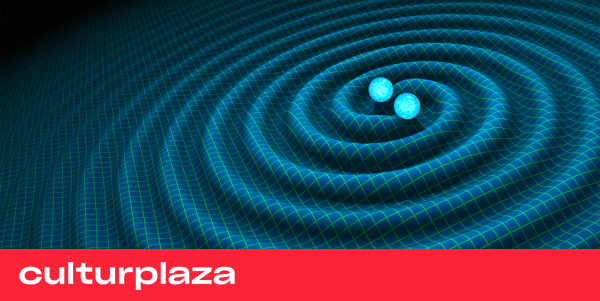One of the most amazing ways we have to make sense of the universe has to do with prediction Einstein a century ago. The story of how we worked together to prove a prediction, and with it at the same time that we are so much more capable when we work together, is the story told by the Italian physicist Matteo Parsolia in Space-time waves: the gravitational wave revolutionpublished by Alianza Editorial with translation Miguel Paredes La Russia. Popular science works, the good ones, are pure literature: an exciting mix of adventure, suspense, and poetry. We read it on the skins of animals that grew up looking up at the night sky, wondering what was out there, how, why, how long ago. Scientific publishing is unparalleled in that it tells us in one way or another about the great questions of existence in terms of the successes we are trying to answer. This is particularly the case with regard to physics, for there is no greater mystery than the universe and how it works. Why is there something instead of nothing? what time is it How many dimensions are there? The detection of gravitational waves by LIGO (Laser Interferometry Gravitational-Wave Observatory) on September 14, 2015, which was also subsequently detected by the European Virgo Center – with Barsuglia playing an instrumental role as Director of Research at the CNRS in the laboratory Astroparticle et Cosmologie is another step in the direction of The grand response is very complex. This first discovery is the result of an amazing global teamwork that culminated in a fifty-year effort, and it is a scientific epic that Parsolya narrates in this book in such an exciting way that it makes us unable to stop reading until it is finished. Is there any literary subject that can match the phenomenon that caused this first discovery, what that discovery entailed, and the journey to create a detector with astonishing sensitivity as the interferometers that captured it?
And so we have two cosmic monsters, black holes or neutron stars, that have been dancing around each other for millions of years, timidly approaching each other. The gravitational waves emitted are still too weak to be detected. What is being picked up up to that point is pure reverb, a very low tone. As it continues to spin, the waves become denser and sharper. The vortex becomes more intense. The stars are now spinning at speeds close to the speed of light. Finally this last tweet rings out, intense and sharp enough to be detected by Virgo and LIGO, just before and during the merger. Then some residual vibrations come from the newly formed body, and then space-time becomes a quiet ocean again.” It cannot be overcome. The popularization of science must be considered the great genre of our time: the current milestones in science are much stranger than magic. The black hole is the great example. Two black holes spinning at nearly the speed of light, which is a much better example. Let’s face it: the Italians have a knack for this kind. We have Parasolia, and we have, of course, Carlo Rovelli And time arrangement, which we have already discussed in this section. The discovery of these waves, which opens our eyes to phenomena that we have not been able to see until now, shows us another key factor: that we still have the ability to reach an agreement to achieve a common goal that got us out of the crisis. Darkness, which has been the hero of our wonderful discoveries, for let us never forget, that science is not done alone and no one is an island, not even in this cosmic neighborhood where no answer to the call of humanity has been received. currently.



/cloudfront-us-east-1.images.arcpublishing.com/eluniverso/ZHT3NFYA2BFMFDHOGERE3EWDBY.jpg)

